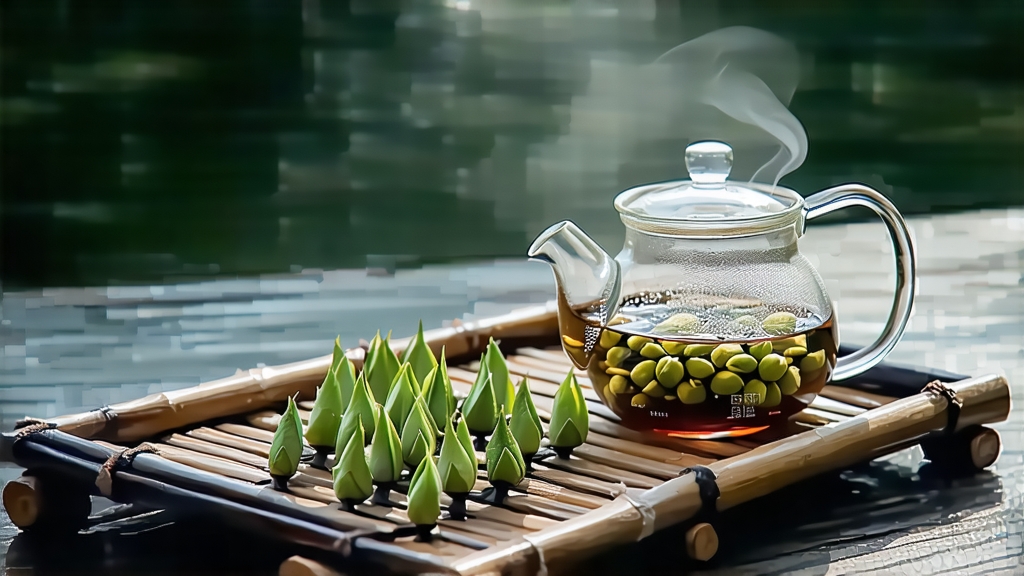
Tucked between the mist-cradled hills of Dongting Mountain and the vast mirror of Lake Tai in Jiangsu Province, Biluochun—literally “Green Snail Spring”—has for three centuries been the quiet jewel of Chinese green tea. Foreign gazetteers once rendered its name as “Pi Lo Chun,” but whatever the spelling, the tea remains a coil of jade downiness that unfurls in hot water like a time-lapse fern. To understand China’s green tea universe, one must taste this single cup: it is at once a botanical snapshot of early April and a palimpsest of imperial taste, maritime trade, and meticulous craft.
Historical whispers place Biluochun’s birth in the Kangxi era (1662-1722). Legend says a tea picker ran out of basket space and tucked fresh shoots inside her bodice; the warmth released an intoxicating aroma that startled her and later the Emperor on his southern inspection tour. Kangxi reportedly renamed the originally rustic “Xia Sha Ren Xiang” (“Scary Fragrance”) to the more elegant “Biluochun,” referencing its snail-like curl and spring harvest. Apocryphal or not, the story underlines two truths: the tea’s perfume is arresting, and imperial patronage catapulted it into the pantheon of China’s “Ten Famous Teas.”
Unlike the cultivar monotony that plagues some celebrated teas, Biluochun is grown on a living gene bank: the Dongting microclimate shelters peach, plum, and loquat trees whose roots interlace with tea bushes. Their spring blossoms dust the nascent buds with pollen, adding a fruity nuance impossible to replicate elsewhere. The finest lots come from Mingqian leaves—plucked before the Qingming festival when two tiny leaves sheath an unopened bud no longer than a sparrow’s tongue. One liang (50 g) of super-grade Biluochun requires roughly 70,000 such shoots, all picked between 5 a.m. and 9 a.m. while dew still guards tenderness.
Craft begins the moment the basket reaches the shed. Leaves are scattered on bamboo trays for two hours of withering, just long enough for grassy edges to mellow. Then comes the most cinematic step: pan-firing in a wok heated to 180 °C. An experienced shifu tosses the leaves with bare hands, feeling for the moment moisture drops from 75 % to 58 %. Fingers flick, press, and roll in one fluid semaphore, turning the leaf edges inward until each shoot resembles a miniature snail shell. The temperature is then dialed down to 80 °C for a second rolling-drying cycle that locks in the signature white fuzz (pekoe) and reduces moisture to 6 %. Done correctly, the process finishes before midnight of the same day, sealing spring inside a dark jade spiral.
To awaken that hibernating season, use a tall cylindrical glass—transparency lets you watch the dance. Weigh 3 g of tea for every 150 ml of water. Lake Tai’s own spring water is ideal, but any soft, neutral water brought to 80 °C will suffice; boiling water scalds the down and flattens aroma. Pour first down the side of the glass to avoid direct splash, then float the leaves on top. Within thirty seconds the spirals hydrate and sink, exhaling a fragrance that oscillates between white peach and fresh blanched edamame. After one minute the liquor turns the color of pale chrysanthemum honey; it is ready to sip.
Tasting is a three-breath ritual. First, inhale over the cup rim: top notes should evoke apricot blossom and a hint of marine air, a reminder of Lake Tai’s brackish breezes. Second, take a modest sip and let it rest on the tongue’s center; the amino acid-rich buds release a brothy sweetness Chinese tasters call xian, akin to the savoriness of kombu dashi. Finally, part your lips slightly and draw air in: the cooled liquor releases a cooler, almost minty echo, proving the tea’s famed “seven infusions, seven fragrances.” Each steeping unveils a different aromatic layer—orchid, cucumber skin, steamed rice, then finally a return to gentle sweetness that signals farewell.
Biluochun’s delicacy demands restraint. Grandpa-style brewing—leaves in a glass repeatedly topped with water—works if doses are halved. Gongfu is possible but risky; use a 120 ml gaiwan, flash infusions of 10 s, and stop before